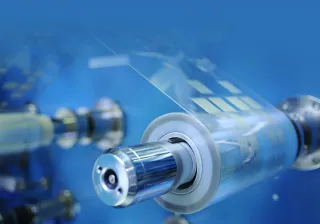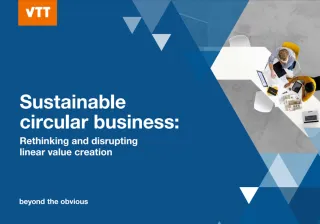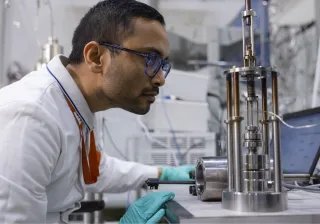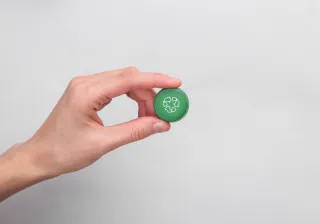The fast-developing area of printed intelligence is swiftly gaining a larger foothold in the world of technological innovations. The modification technology used on the film surface enables producing holographic flexible film with no metal, extra lacquer or lamination and offers a large business potential for various printed intelligence applications. Being a cost-effective and sustainable technology that can be applied on paper, carton, plastic and even textiles, the possibilities of printed intelligence seem immense.
Key facts
Several applications ranging from food packaging industry to decorative interior products – in the future also other novel products with micro scale textures on flexible materials
No metal, extra lacquers or lamination is needed – a sustainable and cost-effective printing alternative for the growing packaging industry
Additional effects for enhancing product appearance but also for preventing counterfeits.
Printed intelligence has been researched at VTT for years as one of the research centre’s key projects. As VTT is a hub for many innovations, it was no surprise that in 2011 Jaakko Raukola, who had a background as VTT researcher, launched ISCENT, a new Finnish start-up company with the objective of commercialising a new, high-quality optical light scattering effect material produced by surface modification in nanoscale. A few years later also another VTT researcher, Raimo Korhonen, who had been working closely with printed intelligence at VTT, joined Iscent.
During the initial research project between 2003–2011, VTT developed a sleeve technique for the surface modification where a nickel plate was shaped as a sleeve and placed over the roller. This was a significant improvement as it made it much easier to change the print pattern used on the production line. Later on, the collaboration between VTT and ISCENT continued in a year-long development project. In order for large-volume commercial production to be feasible, ISCENT constructed a new extra-wide roll-to-roll production line of 1,200 mm compared to the pilot version of 200 mm designed by VTT. The project proved to be successful making ISCENT the only company in the world that utilises the hot embossing surface modification technology combined with the sleeve technology.
The wide roll-to-roll production line offers promising opportunities for printing without ink, but it has been mainly developed to provide an improved packaging solution for wrappings, flexible packages and labels. In addition to forming holograph-like images, the technology also enables micro- and nano-level surface modifications in order to create, for example, tailored, decorative and easily authenticated packaging.
International interest creating new business opportunities
The hard work has gradually started to pay off, as in the spring of 2018 ISCENT made its first commercially notable business deal with a distinguished German packaging and print media company that operates with renowned international brands. Additional negotiations have taken place with packaging and printing houses in South Korea, Spain, Portugal, Austria and the United States, and there seems to be interest also in Russia.
Almost all start-up companies go through challenging times, also known as the Death Valley period. Some survive, others don’t. I think we have overcome the tallest obstacles despite the challenges of securing a steady stream of funding. It is also not possible to make very fast moves in this line of industry, so one must be prepared to invest time, effort and funds on a longer time-span,
emphasises Raukola, CEO and founder at ISCENT.
Thanks to ISCENT’s bright future prospects, the company has been able to recruit new employees and aims to make ISCENT an intrinsic part of the Finnish export industry.
Bringing sustainability to the packaging industry
What separates ISCENT from other companies in the industry is the sustainability factor of the company’s surface modification technology. The crucial distinction is that ISCENT’s printing technology does not require additional packaging material as the surface of the package is directly patterned.
With the growing demand for reducing the amount of packaging material or at least making the materials more sustainable, our technology is perfect as the graphics can be created directly on the packaging without adding any metallic colours,
states Korhonen.
The collaboration between VTT and ISCENT continues in the Ecotronics project which focuses on environmentally friendly packaging materials. ISCENT’s role is to test how the hot embossing technology can be applied on materials such as bioplastics.
We are looking for new functionalities for our technology so that it could also be used for other purposes in addition to being able to produce visually impressive end products and using the print technology for counterfeit prevention,
adds Raukola.






